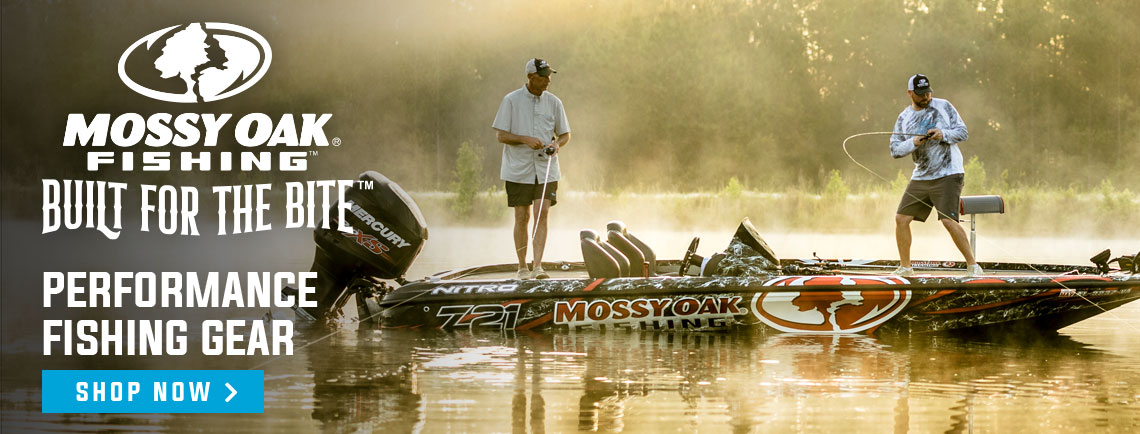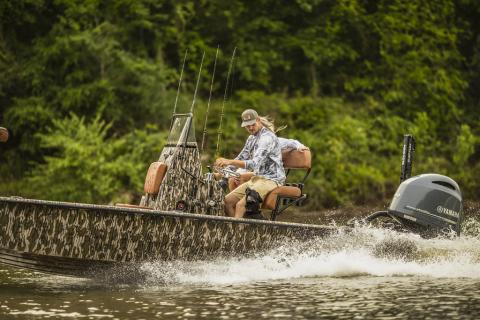Phillip Gentry
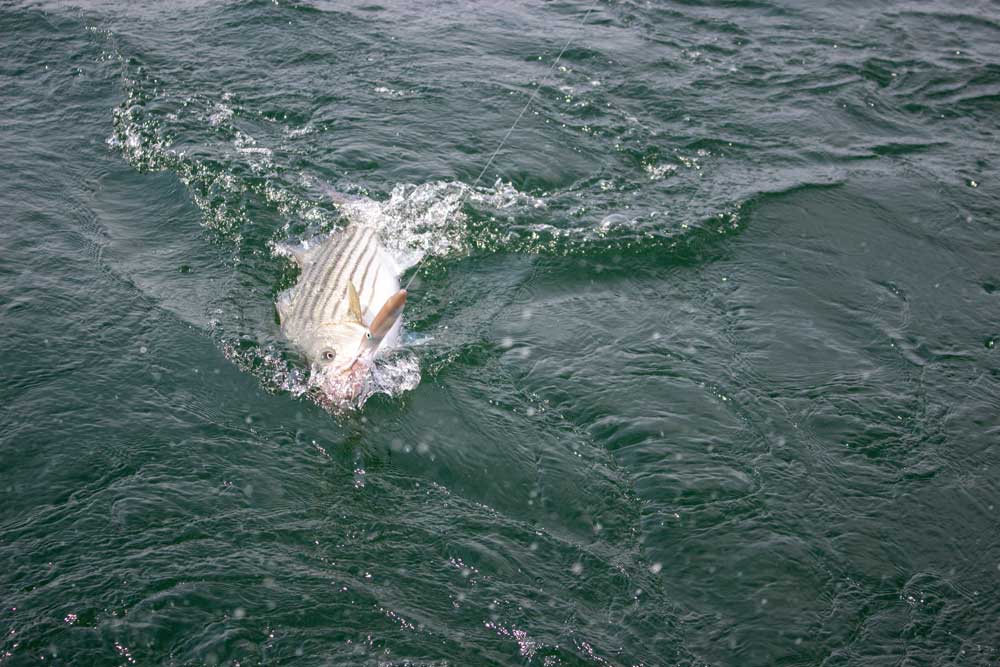
One of the most commonly utilized striped bass fishing tactics is the use of the down rod. Known by a variety of names, this tactic is the vertical presentation of live, dead or cut dead bait.
The most popular rig for down rod fishing is a Carolina rig. The main line from the reel is attached to a barrel swivel. Above the barrel swivel is threaded a weight heavy enough to hold the bait in a vertical presentation. An egg sinker of 1 to 3 ounces is common but some variations of weight choice exist with any sliding weight configuration being acceptable.
It is common practice to thread a small plastic bead between the sliding weight and the swivel to prevent the edge of the weight from chafing against the knot and weakening the line. Tied below the barrel swivel is a length of leader material to which the hook is then attached.
It is desirable that the leader be of less test strength than the main line so that if and when a hang up occurs, only the leader and hook are lost and can be retied quickly.
An effective down rod presentation is to graph fish that are thought to be striped bass on your depth finder and mark the spot with the GPS unit.
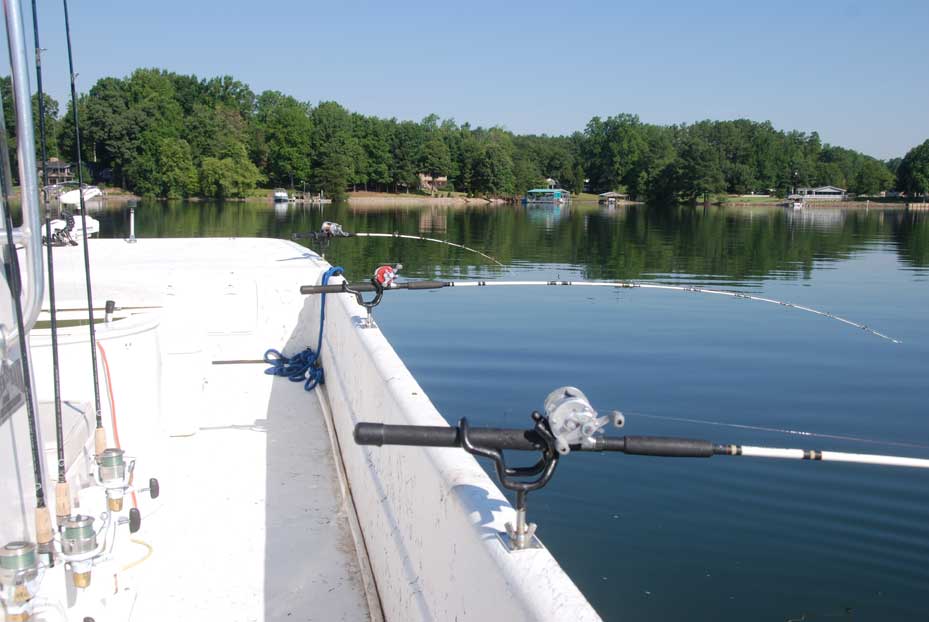
Many striped bass anglers prefer the use of a spot-positioning trolling motor over an anchor, but a single anchor can be deployed from the bow depending on wind or current and the boat allowed to drift back over the mark. The anchor line is then tied off allowing a straight down vertical presentation to the fish.
If a more solid anchoring position is desired, such as when cross winds or currents cause the boat to move off the desired location, a second anchor can be deployed from the stern to hold the boat steady.
If striped bass are not holding tight to a location but are in the general area then it is often preferable not to anchor the boat and either drift with the wind or current through the target area. You can also use a trolling motor to quietly maneuver thru the area if drifting is not feasible.
Depth presentation is the key to down rod fishing. It’s helpful to note the precise depth the fish are using and deploy several baits at or just above this depth. If rods are available, placing a bait 10 feet below the level active fish were marked may entice a larger more solitary striped bass that often hangs out below and off to the side of an active school.
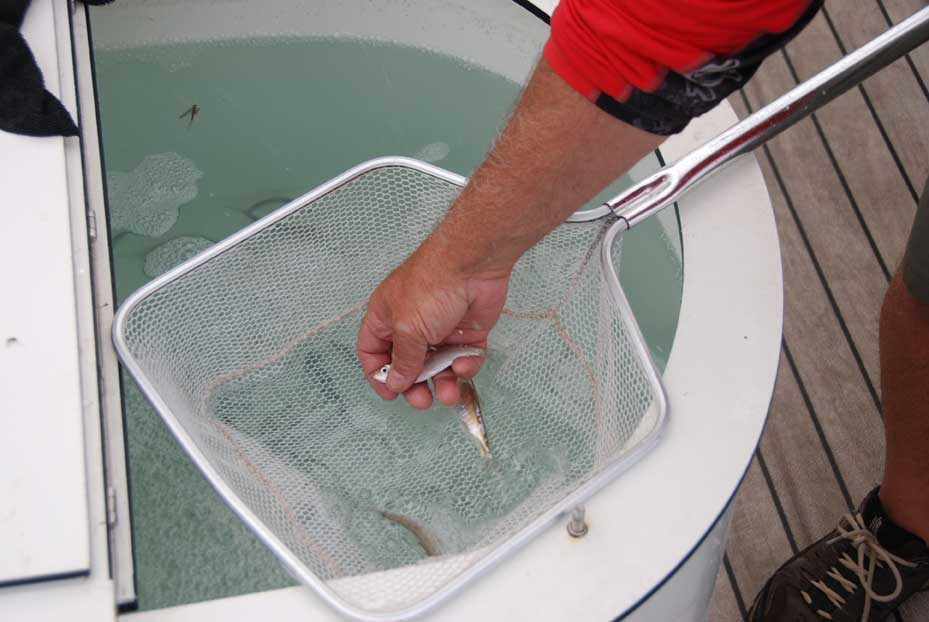
One of the most common mistakes striped bass anglers make when fishing down rods is to set baits out at varying depths and leave them. Being a vertical presentation, fish moving right below the boat will be, within the transducer cone angle of your depth recorder.
Constant monitoring of the depth finder and readjustment of baits to the level the fish enter the cone at will greatly increase your chances of hooking up fish. A school of striped bass is a very competitive atmosphere. While it may take a little time to convince that first fish to take the bait, often times once a fish is hooked and fighting the line, other stripers will move in out of instinct as the erratic movements of the hooked fish will signal feeding to the others.
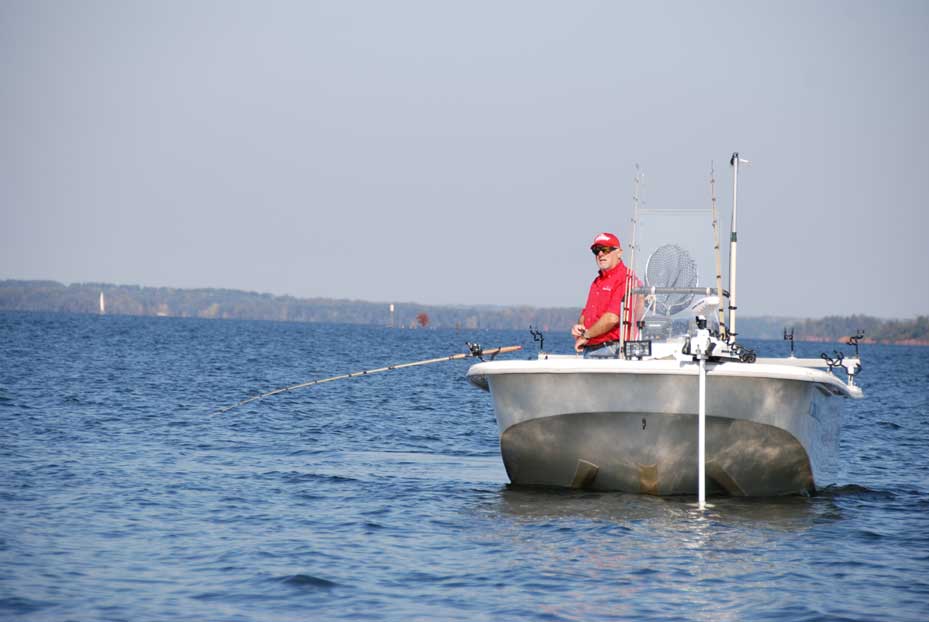
It is for this reason that it is beneficial to play a fish out before getting it into the boat, even allowing the fish to linger for some time to spur the rest of the school. Bear in mind, however, that if the fish is to be released, it is best not to wear him completely down as the buildup of toxins in the fish’s bloodstream from the fight will hamper live release, especially in warmer water.
Using the trolling motor to search for fish or move within an area thought to hold fish is also an effective technique. If the intent is to cover water with a down rod set up, it is advised to keep the baits above the highest level of structure, (standing timber, trees, stumps or rocks) to prevent hang ups.
The idea is to search the lower water column rather than providing a precise vertical presentation. If a school is found then the boat can be held on the location with the trolling motor and baits adjusted to specific fish depth.

